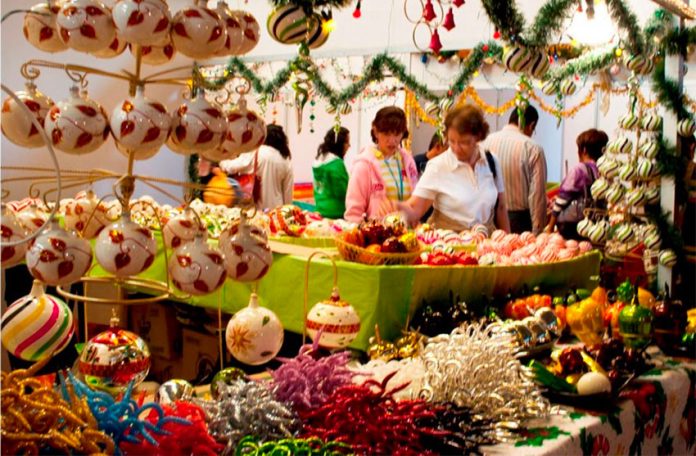The Michoacán town of Tlalpujahua refuses to let Covid-19 ruin its Christmas spirit: artisans here are preparing to go ahead with a 50-plus year tradition — the Tlalpujahua Ornament Fair, which begins December 13.
The fair, well-known throughout Mexico, will operate with some major restrictions: the usual capacity will be reduced by 50% and senior citizens and children will not be allowed to enter. There will be the usual temperature checks and distribution of hand sanitizer and social distancing rules will be in place.
In addition, to avoid overcrowded conditions, the 300 artisans expected to participate will only be allowed to set up shop on alternating days, meaning no more than 150 artisans will be on hand a time.
It’s a bit of a blow for the Magical Town that is known the “town of eternal Christmas.” But the more than 400 artisan workshops that make their living manufacturing blown-glass Christmas ornaments here are betting on visitors being willing to put up with the inconveniences to get a much-needed dose of the holiday spirit.
It’s a high-stakes bet: ornaments are big, big business here. Between year-round sales and the revenue generated in town from the annual event, Tlalpujahua artisans, directly and indirectly, represent about 60% of the town’s economy, or 180 million pesos annually. In some way or another, nearly all the town’s 27,000-plus inhabitants earn money from the industry — as craftsmen, factory workers, tourism providers, and suppliers and vendors.
Christmas tree ornaments in Mexico go back probably to the late 1800s, when Queen Victoria made them a fad in Europe. Mexico already had Christmas trees, thanks to their introduction in the 1860s by Emperor Maximilian and his wife Carlota, who brought what is believed to be the first Christmas tree to Mexico from Europe and displayed it in Chapultepec Castle, likely using small candles, not ornaments.
However, even after the royal couple was ousted, wealthy families who copied their example kept the Christmas tree tradition alive and likely began importing ornaments as they became popular abroad.
The Christmas ornaments industry came to Tlalpujahua, located about three hours from Mexico City, in 1960. Resident Joaquín Muñoz and his wife María Elena Ruíz had learned the technique for glass-blowing Christmas ornaments while in the United States and brought the knowledge back to their town with them.
Muñoz went into the ornaments business and soon had 1,500 people working for him producing 15 million ornaments per season.
Over time, Muñoz’s workshop expanded, becoming an even larger source of local employment. The factory added a “Santa’s House” and, as of last year, a Bavarian-style Christmas village which, among other things, features craftspeople publicly making Christmas decorations and minstrels that dance and sing Christmas carols.
These days, the Muñoz workshop is run by the family’s 10 children, who say their parents trained many of Mexico’s renowned glass artisans, people like Javier Vidal Ramírez, 43, an expert in the technique who has spent the last 20 years working in the Muñoz workshop after learning the craft from Joaquín. He calls his work “the most beautiful job in the world,” and says that from boyhood he wanted to learn how to make ornaments, having grown up in Tlalpujahua, surrounded by the Muñoz workshop’s creations.
Joaquín’s son Alfredo Muñoz says he and his brothers attend international conventions each year to learn how to update their technology and innovate their designs. It’s a dedication to their craft that has paid off: Muñoz family ornaments have been on trees in the Sistine Chapel in Vatican City, and in the United States in the White House.
Source: El Universal (sp)
